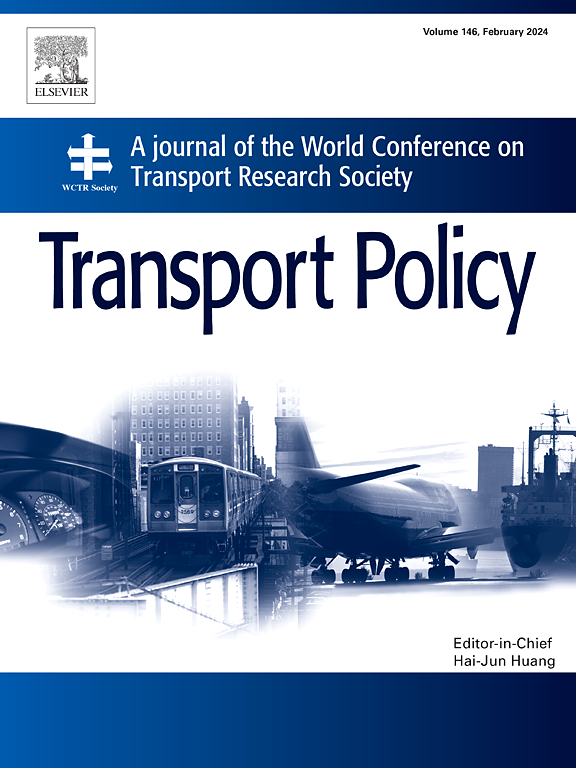Party politics in transport policy with a large language model
IF 6.3
2区 工程技术
Q1 ECONOMICS
引用次数: 0
Abstract
Given the significant influence of lawmakers' political ideologies on legislative decision-making, analyzing their impact on transportation-related policymaking is of critical importance. This study introduces a novel framework that integrates a large language model (LLM) with explainable artificial intelligence (XAI) to analyze transportation-related legislative proposals. Legislative bill data from South Korea's 21st National Assembly were used to identify key factors shaping transportation policymaking. These include political affiliations and sponsor characteristics. The LLM was employed to classify transportation-related bill proposals through a stepwise filtering process based on keywords, sentences, and contextual relevance. XAI techniques were then applied to examine the relationships between political party affiliation and associated attributes. The results revealed that the number and proportion of conservative and progressive sponsors, along with district size and electoral population, were critical determinants shaping legislative outcomes. These findings suggest that both parties contributed to bipartisan legislation through different forms of engagement, such as initiating or supporting proposals. This integrated approach offers a valuable tool for understanding legislative dynamics and guiding future policy development, with broader implications for infrastructure planning and governance.
政党政治在交通政策上具有较大的语言模型
鉴于立法者的政治意识形态对立法决策的重大影响,分析其对交通相关政策制定的影响至关重要。本研究引入了一个新的框架,该框架将大型语言模型(LLM)与可解释的人工智能(XAI)相结合,以分析交通相关的立法提案。来自韩国第21届国民大会的立法法案数据被用来确定影响交通政策制定的关键因素。这些包括政治派别和赞助者特征。通过基于关键词、句子和上下文相关性的逐步过滤过程,采用LLM对运输相关法案提案进行分类。然后应用XAI技术来检查政党归属和相关属性之间的关系。结果显示,保守派和进步赞助者的数量和比例,以及地区规模和选举人口,是影响立法结果的关键决定因素。这些发现表明,两党通过不同形式的参与,例如发起或支持提案,为两党立法做出了贡献。这种综合方法为理解立法动态和指导未来政策制定提供了宝贵的工具,对基础设施规划和治理具有更广泛的影响。
本文章由计算机程序翻译,如有差异,请以英文原文为准。
求助全文
约1分钟内获得全文
求助全文
来源期刊

Transport Policy
Multiple-
CiteScore
12.10
自引率
10.30%
发文量
282
期刊介绍:
Transport Policy is an international journal aimed at bridging the gap between theory and practice in transport. Its subject areas reflect the concerns of policymakers in government, industry, voluntary organisations and the public at large, providing independent, original and rigorous analysis to understand how policy decisions have been taken, monitor their effects, and suggest how they may be improved. The journal treats the transport sector comprehensively, and in the context of other sectors including energy, housing, industry and planning. All modes are covered: land, sea and air; road and rail; public and private; motorised and non-motorised; passenger and freight.
 求助内容:
求助内容: 应助结果提醒方式:
应助结果提醒方式:


